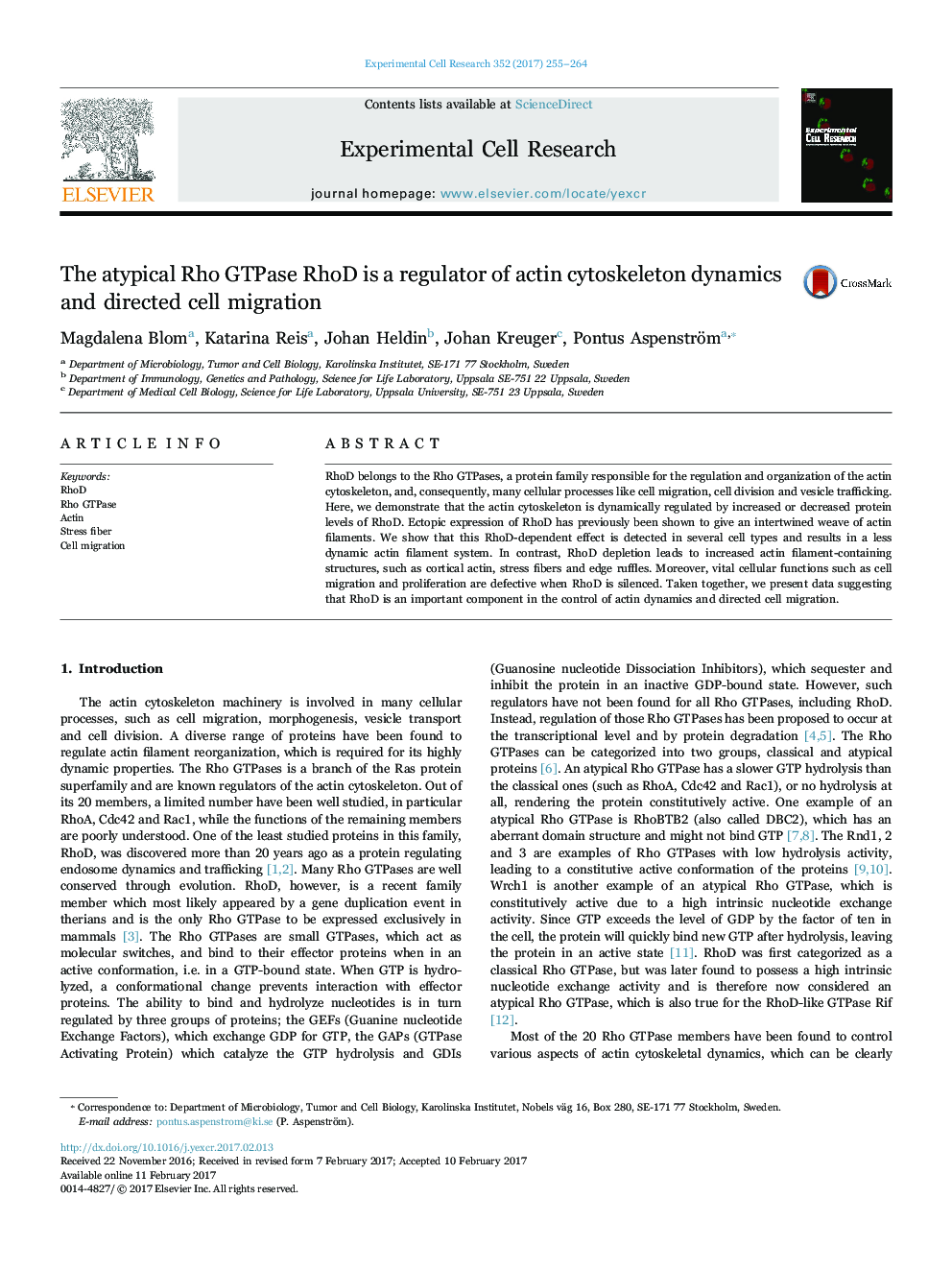| Article ID | Journal | Published Year | Pages | File Type |
|---|---|---|---|---|
| 5527006 | Experimental Cell Research | 2017 | 10 Pages |
â¢Increased RhoD expression leads to loss of actin structures, e.g. stress fibers and gives rise to decreased actin dynamics.â¢RhoD knockdown induces various actin-containing structures such as edge ruffles, stress fibers and cortical actin, in a cell-type specific manner.â¢RhoD induces specific actin rearrangements depending on its subcellular localization.â¢RhoD knockdown has effects on cellular processes, such as directed cell migration and proliferation.
RhoD belongs to the Rho GTPases, a protein family responsible for the regulation and organization of the actin cytoskeleton, and, consequently, many cellular processes like cell migration, cell division and vesicle trafficking. Here, we demonstrate that the actin cytoskeleton is dynamically regulated by increased or decreased protein levels of RhoD. Ectopic expression of RhoD has previously been shown to give an intertwined weave of actin filaments. We show that this RhoD-dependent effect is detected in several cell types and results in a less dynamic actin filament system. In contrast, RhoD depletion leads to increased actin filament-containing structures, such as cortical actin, stress fibers and edge ruffles. Moreover, vital cellular functions such as cell migration and proliferation are defective when RhoD is silenced. Taken together, we present data suggesting that RhoD is an important component in the control of actin dynamics and directed cell migration.
